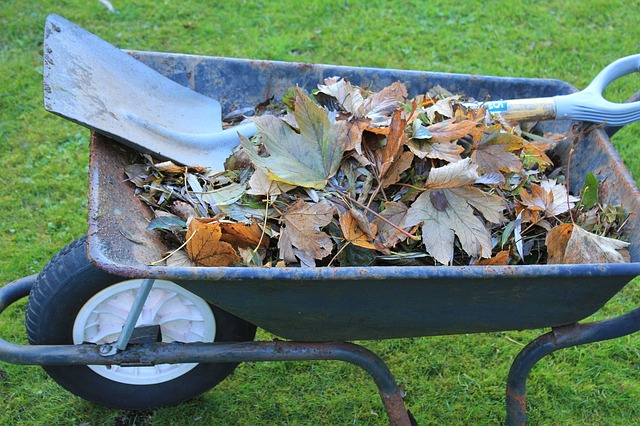
It’s easy to think of autumn as a time of endings, with falling leaves and fading blooms, but in truth, it’s a season of preparation. The work invested in the garden during these cooler months might seem unappealing, but our efforts at this time of year set the stage for spring’s vibrant resurgence.
So with summer slowly fading and the temperatures dropping, gardeners in the UK should shift their focus to the all-important autumn gardening jobs that will ensure a healthy and thriving spring garden in the following year.
Whether you’re a novice or an experienced horticulturist, this comprehensive guide of autumn gardening jobs will walk you through the key jobs to take on this autumn in the garden or allotment. With these tips, your garden will be healthy and ready for when you get back out there in the spring.
Pruning a garden in autumn
Pruning a garden in autumn plays a pivotal role in ensuring the health, aesthetics, and productivity of various plants. As the growing season comes to an end, many plants have finished their growth cycles and are preparing for the dormant winter months.
Pruning during this time helps remove dead or diseased branches, which not only prevents the spread of potential diseases but also reduces the risk of damage from winter snow and ice. By eliminating these weak or unnecessary parts, plants can direct their energy more efficiently to the remaining healthy sections.
Autumn pruning also helps to shape plants, ensuring they grow in a desired direction or pattern in the upcoming spring. This proactive maintenance not only enhances the garden’s appearance but also ensures stronger, more vibrant growth in the subsequent seasons.
How to prune a garden in autumn
- Start cutting back and deadheading and generally stripping crops that have finished their cycle. Collect up seed pods and label carefully, and make any notes of what’s worked well, and what hasn’t!
- You can also, upon completion of blooming, trim herbaceous perennials to a few inches above the ground. This promotes healthy regrowth for the next growing season.
- You can also remove any dead stems from plants and if you have any shrub roses, prune out any dead or crossing stems to help encourage good air flow through the plant.
- If you have any fruit trees, this is a good time to prune them back to promote fruit buds and flowers. Follow this up with a final prune in November before winter really sets in.

Frost protection
Frost protection is a crucial aspect of gardening, especially in the UK where sudden temperature drops can damage or even kill certain plants. As the temperature drops, the water inside a plant’s cells can freeze, causing the cells to rupture and leading to irreversible damage.
Implementing frost protection measures, such as using frost cloths, mulching, or even watering plants in the evening (as moist soil retains heat better than dry soil), can help in retaining the ground’s warmth and shielding the plants.
Protective structures, like cold frames or greenhouses, can create a microclimate that keeps plants safe from the biting cold. By taking these precautions, gardeners can ensure that their plants survive the winter months unscathed and are ready to thrive come spring.
How to frost protect your garden
- Get ready for cold spells by mulching empty beds and borders with organic compost such as our Peat-Free Soil Conditioner, which will allow nutrients to return back into the ground over the winter months.
- If you are planning to grow crops in the ground over winter, covering them with fleece will be a must from November to help insulate plant roots from chilly spells and frostbite.
- Apply a layer of winter mulch around trees, shrubs and plants. This helps to insulate the soil, maintains moisture and regulates temperature.
Bring plants indoors ready for winter
Tender perennials and other delicate plants are particularly susceptible to the harshness of cold weather. As the chill of winter approaches, it’s imperative to consider relocating these plants to a more protected environment. If you’re fortunate enough to have a conservatory or greenhouse, these spaces offer the ideal conditions for wintering such plants.
These structures not only provide the necessary light but also ensure a dry, frost-free environment, which is crucial for their survival. However, if a greenhouse or conservatory isn’t available, a porch can serve as a suitable alternative during the colder months.
To ensure a smooth transition, it’s advisable to dig around these plants, ideally in October, when the ground is still relatively warm. Carefully lift them, preserving as much of the surrounding soil as possible, and then repot them into a sufficiently large container. This process helps in retaining the plant’s familiar soil environment while offering it the protection it needs during the cold season.
Planting in autumn
Planting in autumn in the UK offers several advantages for both the gardener and the plants. As the temperatures begin to cool, the soil retains warmth from the summer months, creating an ideal environment for root development.
This allows plants, especially trees, shrubs, and hardy perennials, to establish a strong root system before the onset of winter, preparing them for vigorous growth come spring.
Autumnal rainfall ensures that plants receive adequate moisture, reducing the need for frequent watering. Autumn is also the perfect time to plant spring-flowering bulbs like daffodils, tulips, and crocuses, ensuring a burst of colour in your garden after the winter months.
By taking advantage of this season, gardeners can set the stage for a flourishing garden, reaping the benefits of their efforts in the subsequent seasons.
What to plant in autumn
- The next season will be filled with colour in your garden if you plant spring and summer-flowering bulbs. The only thing you have to do is get the bulbs into the ground ahead of winter, and then you can sit back and wait for the flower show to begin next year!
- Choose fat healthy bulbs with no signs of decay and plant them in sunny areas if possible. If you want your garden to be awash with daffodils in the spring, they prefer to be planted in the early autumn, so get them in the ground asap!
- There are also plenty of vegetables to plant in autumn as well. Planting these in autumn will give you a wonderful harvest next year so will be worth it in the end!
You could also create a wonderful autumn hanging basket to help bring some colour to your outdoor space.
Tidy up your garden for autumn
Autumn is an excellent time to do a general tidy-up of the garden. You can rake up any fallen leaves around the garden, trim back any perennial plants or unruly hedges, and replant any hanging baskets with some new plants – some hardy perennials like white violets would be a good choice.
You probably don’t need that garden hose anymore, so drain it fully and store it away in your shed or garage for the autumn and winter along with other gardening equipment that won’t be used.
Autumn lawn care tips
Autumn is a great time to do some prep for the chillier months up ahead. Here are some easy autumn lawn care tips to help ensure your lawn stays healthy throughout the autumn and winter.
Scarify your lawn using a garden fork and rake up any thatch that has accumulated. Scarifying your lawn in the autumn helps to stop the grass roots from suffocating over the winter.
You can over-seed any bald patches as the temperature cools slightly and the conditions become damper. It’s best to scarify and seed during early autumn; the middle of November is your typical cut-off point ahead of the threat of any frosts.
Remove any perennial weeds from the lawn by digging them up, including the roots, and cover with topsoil – you can also sow some grass seed evenly over these areas.
If you’ve collected lots of hardwood cuttings and natural debris, make sure you add them to your compost heap so they break down into mulch over the coming months. If you don’t compost your piles of leaves, when they decay they are a breeding ground for diseases that can affect your lawn and surrounding plants.

Helping wildlife in the autumn
It’s not just your garden that needs a bit of attention to help it through the winter, there are things you can do to help wildlife as well.
As the temperature drops put out bird feeders and high-protein foods as our feathered friends will start to struggle to find food. Small birds will need up to a quarter of their body weight each day in the cold months.
Hedgehogs will also need our help as they need to feast ready for their winter hibernation. Meaty dog food is perfect, and hedgehog food is widely available at pet shops and supermarkets. You could also consider a weekend project to build a hedgehog hotel too, so they have somewhere to snuggle up! Cute!
As the season changes we hope you enjoy getting the most out of your garden and enjoying all that autumn can bring!
Earth Cycle gardening products
If you are looking for high-quality compost, topsoil or mulch to help you in your garden this autumn, then Earth Cycle has everything you need, ready for curbside delivery. Take a look through our huge range of products and order yours today.




